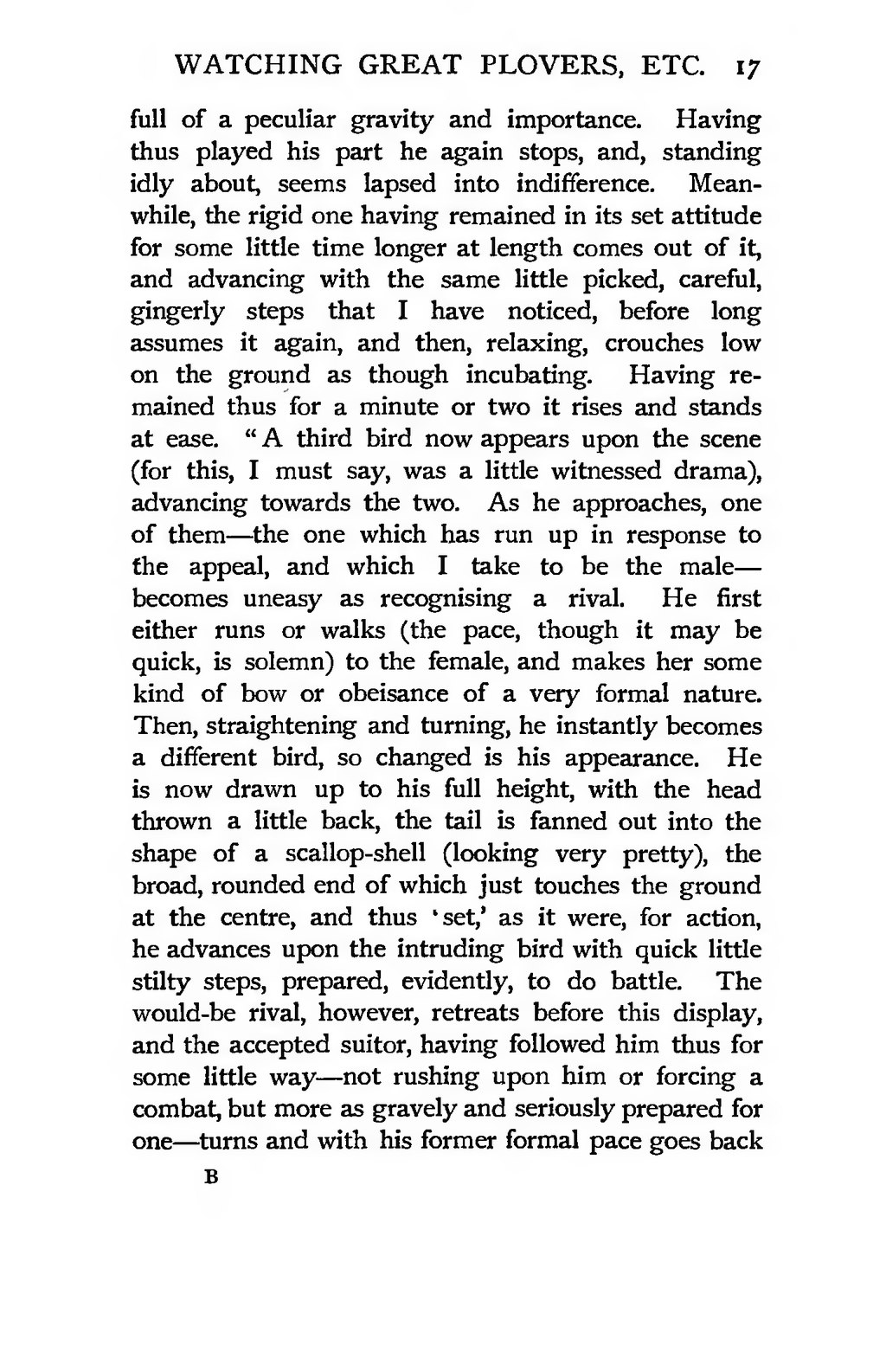full of a peculiar gravity and importance. Having thus played his part he again stops, and, standing idly about, seems lapsed into indifference. Meanwhile, the rigid one having remained in its set attitude for some little time longer at length comes out of it, and advancing with the same little picked, careful, gingerly steps that I have noticed, before long assumes it again, and then, relaxing, crouches low on the ground as though incubating. Having remained thus for a minute or two it rises and stands at ease. "A third bird now appears upon the scene (for this, I must say, was a little witnessed drama), advancing towards the two. As he approaches, one of them—the one which has run up in response to the appeal, and which I take to be the male—becomes uneasy as recognising a rival. He first either runs or walks (the pace, though it may be quick, is solemn) to the female, and makes her some kind of bow or obeisance of a very formal nature. Then, straightening and turning, he instantly becomes a different bird, so changed is his appearance. He is now drawn up to his full height, with the head thrown a little back, the tail is fanned out into the shape of a scallop-shell (looking very pretty), the broad, rounded end of which just touches the ground at the centre, and thus 'set,' as it were, for action, he advances upon the intruding bird with quick little stilty steps, prepared, evidently, to do battle. The would-be rival, however, retreats before this display, and the accepted suitor, having followed him thus for some little way—not rushing upon him or forcing a combat, but more as gravely and seriously prepared for one—turns and with his former formal pace goes back
